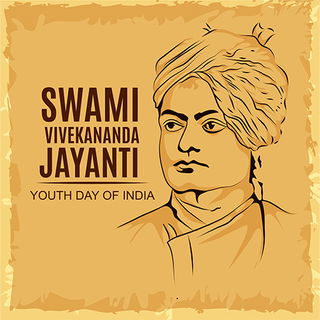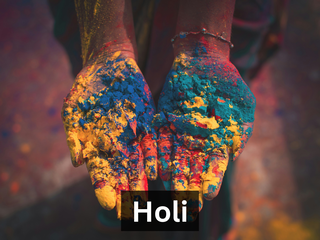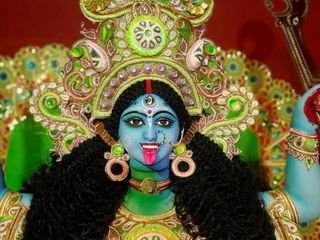The Palkhi Festival is a vibrant and hundreds of years old celebration of Maharashtra culture and devotion, bringing together millions of people in prayers, songs, and endless walking under the sun.
Palkhi, the center of the festival, is a ceremonial palanquin that carries the symbolic padukas or sandals of saints such as Sant Tukaram and Sant Dnyaneshwar.
These are more than just processions, these are pilgrimages of faith known as Wari that are unforgettable.
Palkhi Festival Dates 2025
The Sant Tukaram Maharaj Palkhi begins a few days before the Sant Dnyaneshwar Maharaj Palkhi, which starts on 9th June 2025, as both journeys lead up to the grand celebration of Aashadhi Ekadashi at Pandharpur on 19th July 2025.
The whole Wari journey leads up to Aashadhi Ekadashi, the biggest celebration day at Pandharpur.
What is the Wari
Wari, in simple words, means “pilgrimage” but calling it just as wari is basically an understatement.
It is no less than a human sea flowing throughout the state of Maharashtra.
Warkaris are the heart and soul of the Palkhi Festival. They are everyday people, farmers, students, teachers, shopkeepers, who turn into pilgrims during the Wari.
Dressed in simple white clothes with tulsi beads around their necks, they carry only the bare essentials: a small bag, a water bottle, and endless faith.
Every year, millions of Warkaris walk from their respective hometowns towards Pandharpur, chanting the name of Lord Vittal, a reincarnation of Krishna, as they sing abhangs and move together in a rhythm that feels like one shared heartbeat.
For Warkaris, the Wari isn’t just a journey, it’s living their devotion, one dusty step at a time.
Pandharpur Wari
The Pandharpur Wari is the core of the Palkhi Festival which is a 21-day on foot journey to Pandharpur.
It is also known as the Southern Kashi of India, where Lord Vitthal and his consort Rakhumai are worshiped.
The Pandharpur Wari has two important Palkhis:
- Sant Dnyaneshwar Maharaj Palkhi from Alandi
- Sant Tukaram Maharaj Palkhi from Dehu
Both Palkhis commence their journeys separately but eventually converge, symbolizing the unity and collective spirit of the Wari, creating a profound sense of togetherness among the devotees.
The Infamous Palkhi Route
Sant Dnyaneshwar Maharaj's Palkhi route covers about around 250 km which is similar to 155 miles that takes about 21 days to reach Pandharpur.
The route passes through towns like:
- Alandi (start point)
- Pune
- Saswad
- Jejuri
- Lonand
- Wakhari (just before Pandharpur)
There are halt stations for warkaris to rest along the way where locals serve them food and water.
The Pandharpur Yatra is way more than making it to the temple. The importance lies in the journey.
When Warkaris finally reach Pandharpur, they take a dip in the Chandrabhaga River which is said to wash away sins and purify devotees. They then queue up for darshan of Lord Vitthal.
The History of the Palkhi Tradition
The tradition of Palkhi is around 800 years old and started with the followers of Sant Dnyaneshwar Maharaj who decided to pay tribute to their saint by carrying his padukas from Alandi to Pandharpur.
Later, Sant Tukaram Maharaj’s followers started their own Palkhi from Dehu.
Over time, these separate traditions merged into the massive, organized, awe-inspiring event we now call the Wari.
Fascinating Facts About Palkhi Festival
- The Palkhi follows a strict schedule with set start times, rest days, and breaks.
- Warkaris (pilgrims) sometimes walk for 40-60 years straight, treating the Wari as a yearly reunion with God.
- Pilgrims carry saffron flags, cymbals, and veenas, creating a constant flow of devotional music.
- Warkaris sleep in tents or open grounds, relying on local hospitality, and wake up at 4 a.m. for prayers.
- Women Warkaris often carry tiny padukas (footwear) on their heads as a symbol of strength and humility.
- Efforts have been made to keep the Wari eco-friendly by reducing plastic and cleaning up after themselves.
- Walking barefoot is common, and Warkaris believe facing hardships on the road brings them closer to Vitthal.
- In ancient times, the Wari also helped farmers network, exchange seeds, and share farming tips.
- During the COVID pandemic, smaller Waris were organized in villages, but the spirit remained unchanged.
- Warkaris sing and dance at every small temple on the way, making the journey both spiritual and physically active.











